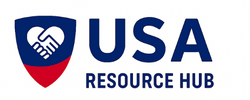Utility costs continue to strain household budgets in 2026, even as energy providers roll out new incentives and rate structures. Rising demand, aging infrastructure, and unpredictable weather patterns have made monthly bills harder to predict and harder to manage. Fortunately, there are now more tools than ever to help consumers cut costs without sacrificing comfort.
This guide outlines practical habits, rebate opportunities, and assistance programs that appear to reduce utility expenses for U.S. households. Whether you rent or own, these strategies may help you regain control over your monthly spending.
Start with Energy-Saving Habits That Actually Work
Small changes in daily routines often lead to noticeable savings. While some tips may sound familiar, their impact depends on consistency and context.
- Adjust thermostat settings seasonally: In winter, lower the heat by 7 to 10 degrees while sleeping or away from home. In summer, raise the cooling setting slightly. Smart thermostats automate this process, potentially saving up to 10 percent annually.
- Unplug idle electronics: Devices such as TVs, gaming consoles, and chargers continue to draw power even when turned off. Use power strips to disconnect multiple electronics with a single switch.
- Wash clothes in cold water: Most detergents work well without heat. Cold cycles reduce energy use and extend the life of fabrics.
- Limit peak-hour usage: Some utilities charge more during high-demand hours. Shift laundry, dishwashing, and charging to off-peak times when rates are lower.
- Seal air leaks and insulate: Drafty windows and doors force HVAC systems to work harder. Weatherstripping, caulking, and attic insulation may reduce heating and cooling costs by 15 percent or more.
These habits are not one-size-fits-all. It is advisable to track your usage patterns and adjust based on what fits your home and lifestyle.
How to Get Help With Your Power and Energy Bills
With energy costs continuing to rise, many households are struggling to keep up with their monthly utility bills. Whether it’s heating during winter, cooling during summer, or simply keeping the lights on, utility support programs exist to ensure families and individuals don’t have to choose between comfort and financial stability.
The good news is that federal and state assistance programs can help reduce energy costs, prevent shutoffs, and even improve home efficiency for long-term savings.
Many local energy providers offer their own bill payment or forgiveness programs. These can include:
- Budget billing plans to spread costs evenly throughout the year
- Payment arrangements for past-due balances
- Discount or rate reduction programs for income-eligible households
Contact your energy provider directly or check their website for details on available programs in your area.
- Energy Star appliance rebates: Many states offer cash back for upgrading to certified Energy Star appliances, including refrigerators, washers, dryers, and HVAC systems. Rebates vary by location and product type.
- Heat pump incentives: In 2026, heat pumps are eligible for significant rebates under the Inflation Reduction Act. These systems provide efficient heating and cooling, especially in moderate climates.
- Solar panel tax credits: Homeowners who install solar panels may claim up to 30 percent of the system cost as a federal tax credit. Some states add local incentives or net metering benefits.
- Smart home device discounts: Utilities often partner with manufacturers to offer discounts on smart thermostats, leak detectors, and energy monitors. These tools help track usage and automate savings.
Before making upgrades, check your utility provider’s website or visit Energy.gov for current rebate details. Eligibility may depend on income, location, or building type.
Explore Assistance Programs for Ongoing Support
For households facing financial hardship, assistance programs provide relief through bill credits, payment plans, and weatherization services. These programs are designed to prevent service interruptions and support long-term efficiency.
- LIHEAP (Low Income Home Energy Assistance Program): This federal program helps eligible families cover heating and cooling costs. Funds are distributed through state agencies and may include emergency support.
- Weatherization Assistance Program (WAP): WAP provides free energy audits and upgrades (such as insulation, window repair, and HVAC tuning) for qualifying homes. The goal is to reduce energy burden over time.
- Utility-sponsored payment plans: Many providers offer budget billing, deferred payment options, or hardship grants. These plans smooth out seasonal spikes and prevent disconnection.
- Community solar access: In select regions, renters and low-income households can subscribe to shared solar projects. Participants receive credits on their utility bills without having to install panels.
⚠️ Act Now — Funding Is Limited
Many programs have limited funding or strict enrollment periods. Waiting could mean missing your opportunity for assistance.
It is recommended to apply early, as funding may be limited. Documentation requirements vary, but most programs prioritize seniors, families with children, and individuals with disabilities.
Combine Strategies for Maximum Impact
Lowering utility bills is about layering solutions that work together. Start with habits that reduce daily consumption. Then, explore rebates to upgrade inefficient systems. Finally, lean on assistance programs if your budget needs extra support.
Energy savings is broader and more accessible than ever in 2026. By staying informed and proactive, you position your household to spend less, waste less, and live more comfortably. The key is to act before costs spiral, because the best time to cut your bill is before it arrives.


Leave a Reply